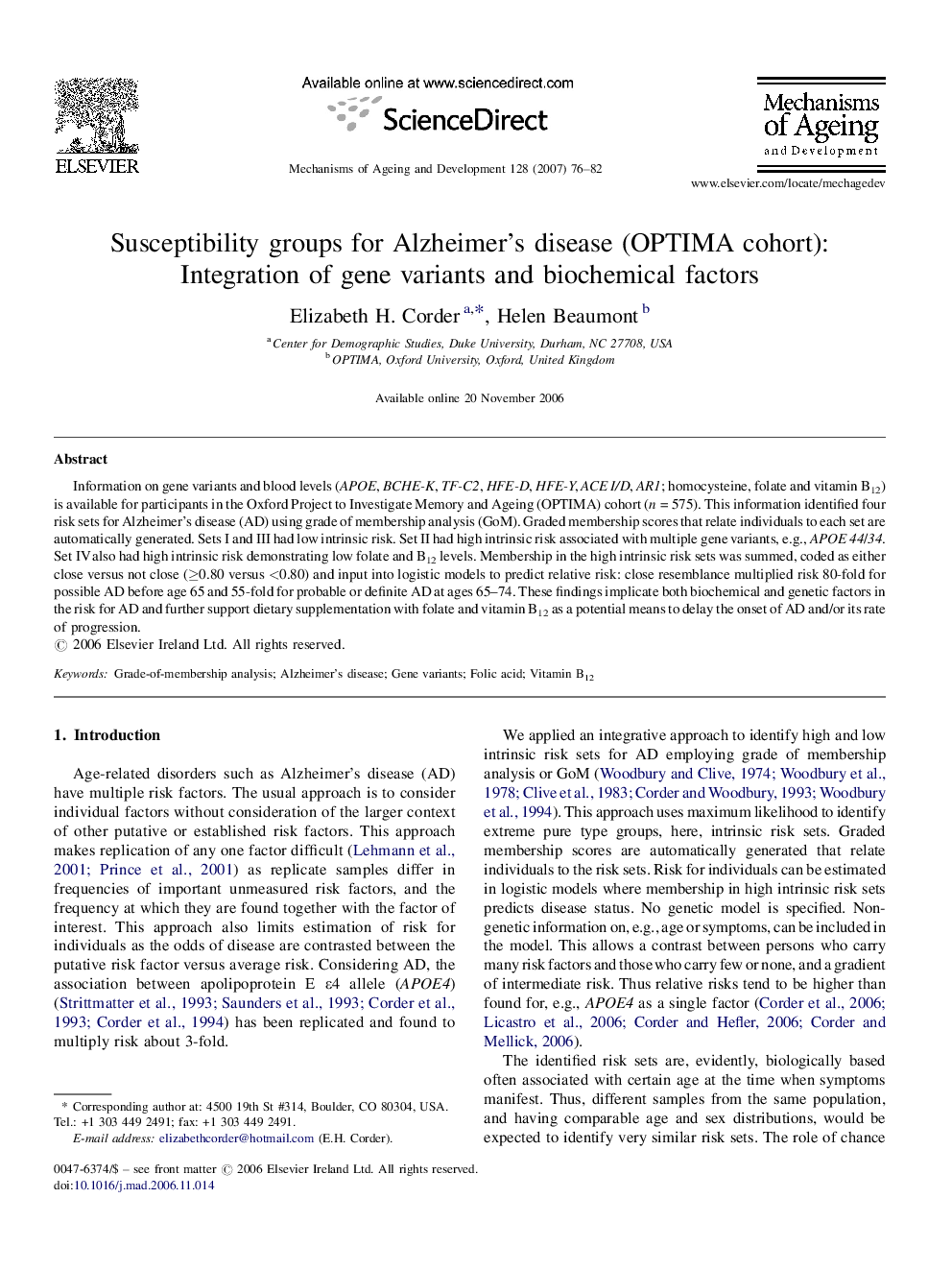| کد مقاله | کد نشریه | سال انتشار | مقاله انگلیسی | نسخه تمام متن |
|---|---|---|---|---|
| 1919911 | 1535678 | 2007 | 7 صفحه PDF | دانلود رایگان |

Information on gene variants and blood levels (APOE, BCHE-K, TF-C2, HFE-D, HFE-Y, ACE I/D, AR1; homocysteine, folate and vitamin B12) is available for participants in the Oxford Project to Investigate Memory and Ageing (OPTIMA) cohort (n = 575). This information identified four risk sets for Alzheimer's disease (AD) using grade of membership analysis (GoM). Graded membership scores that relate individuals to each set are automatically generated. Sets I and III had low intrinsic risk. Set II had high intrinsic risk associated with multiple gene variants, e.g., APOE44/34. Set IV also had high intrinsic risk demonstrating low folate and B12 levels. Membership in the high intrinsic risk sets was summed, coded as either close versus not close (≥0.80 versus <0.80) and input into logistic models to predict relative risk: close resemblance multiplied risk 80-fold for possible AD before age 65 and 55-fold for probable or definite AD at ages 65–74. These findings implicate both biochemical and genetic factors in the risk for AD and further support dietary supplementation with folate and vitamin B12 as a potential means to delay the onset of AD and/or its rate of progression.
Journal: Mechanisms of Ageing and Development - Volume 128, Issue 1, January 2007, Pages 76–82